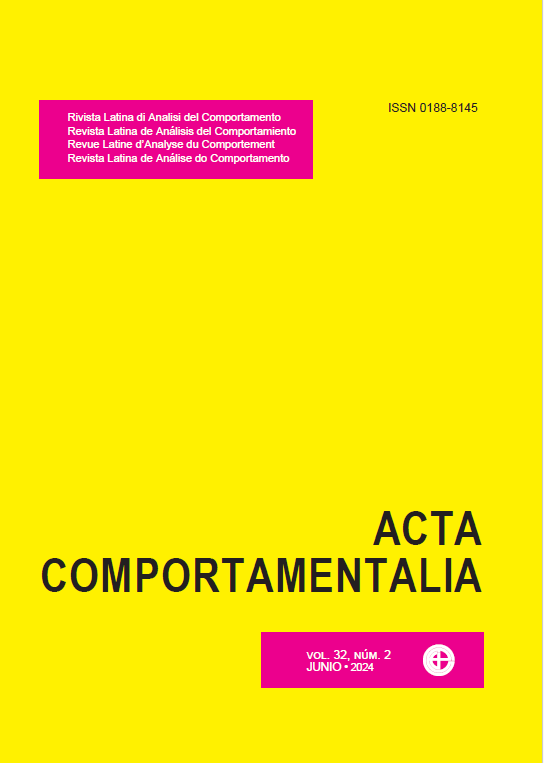Interactive Styles and Dietary Adherence in Adults with Overweight and Obesity: the Case of Persistence
DOI:
https://doi.org/10.32870/ac.v32i2.88350Keywords:
interactive profile, interbehaviorism, diet adherence, nutrition, healthAbstract
The role of interactive styles in a persistence situation in adherence to a diet, in five over weighted or obese adults, was explored using an AB intrasubject design. After an anthropometric pre-treatment assessment and clinical analysis, the present study consisted of a nutritional intervention and exposure, on two occasions and four weeks apart, to a figure arrangement task under the parameters of a persistence situation. From the two applications of the persistence task, the interactive profiles of each participant in this type of situation were identified, observing consistent and idiosyncratic behavior patterns and their preferences for options of higher or lower demand. Since the diet plans changed weekly and they presented increasing caloric restriction, it was examined whether adherence to the diet was related to performance in the persistence task. Excepting one participant, we observed that those who opted for the alternative of higher requirements showed greater adherence to the diet and vice versa. The relevance of nutritional interventions that, from the beginning, consider the consistent and distinctive behavioral patterns of users is suggested.
Downloads
Downloads
Published
How to Cite
Issue
Section
License

<a rel="license" href="http://creativecommons.org/licenses/by-nc-sa/4.0/"><img alt="Licencia de Creative Commons" style="border-width:0" src="https://i.creativecommons.org/l/by-nc-sa/4.0/88x31.png" /></a><br />Este obra está bajo una <a rel="license" href="http://creativecommons.org/licenses/by-nc-sa/4.0/">licencia de Creative Commons Reconocimiento-NoComercial-CompartirIgual 4.0 Internacional</a>.






